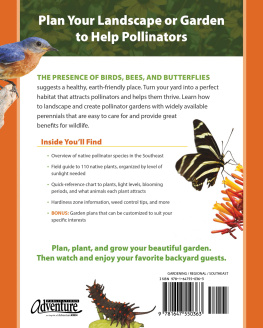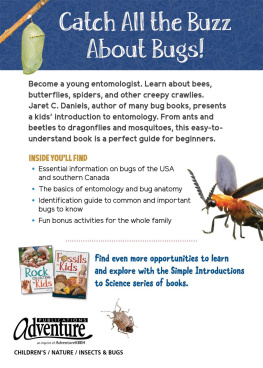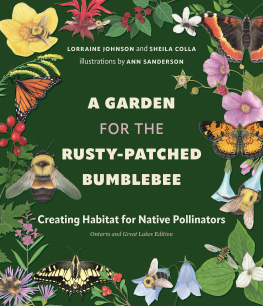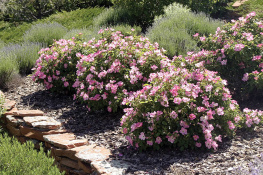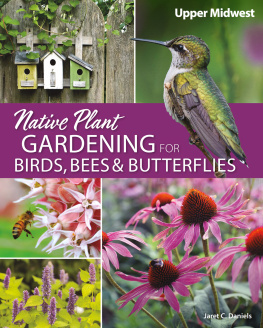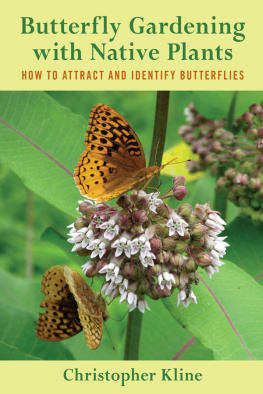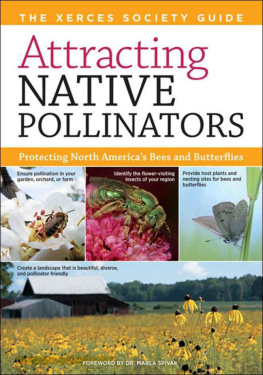

DEDICATION
To my wife, Stephanie, for her unconditional love and support. I am continuously grateful to have such an amazing person with whom to share my life.
ACKNOWLEDGMENTS
Thanks to my parents for their enduring encouragement of my interest in natural history and all things wild.
Cover and book design by Jonathan Norberg
Edited by Brett Ortler and Ritchey Halphen
Proofread by Melissa Haskin
Photo credits:
All cover photos by Jaret Daniels unless otherwise noted.
Front cover: Lance-leaf Coreopsis by Hecos/shutterstock.com Ruby-throated hummingbird; by John L. Absher/shutterstock.com; Common buckeye butterfly by Leena Robinson/shutterstock.com; old wooden birdhouses by Michael Warwick/shutterstock.com; Scarlet Beebalm by Vahan Abrahamyan/shutterstock.com
Back cover: Zebra longwing butterfly by Danita Delimont/shutterstock.com; Brown-eyed Susans by Marinodenisenko/shutterstock.com; Eastern bluebird by Steve Byland/shutterstock.com
All photos by Jaret Daniels unless otherwise noted.
All photos copyright of their respective photographers.
Dave Czoschke:
These images are licensed under the Attribution 2.0 Generic (CC BY 2.0) license, which is available at
These images are licensed under the CC0 1.0 Universal (CC0 1.0) Public Domain Dedication license, which is available at
Images used under license from shutterstock.com.
Abeselom Zerit:
10 9 8 7 6 5 4 3 2 1
Native Plant Gardening for Birds, Bees & Butterflies: Southeast
Copyright 2021 by Jaret Daniels
Published by Adventure Publications
An imprint of AdventureKEEN
310 Garfield Street South
Cambridge, Minnesota 55008
(800) 678-7006
www.adventurepublications.net
All rights reserved
Printed in the United States of America
ISBN 978-1-64755-036-3 (pbk.); ISBN 978-1-64755-037-0 (ebook)
Table of Contents
Southeast Native Plants
Why You Should Plant a Garden
Landscaping with native plants offers numerous benefits. First and foremost, it helps increase habitat and provides critical resources for wildlife. Studies have shown that including native plant species and increasing overall plant diversity, help support a greater abundance and diversity of wildlife. Natives are adapted to the growing conditions, such as soil and climate, of the locations where they naturally occur. As a result, they tend to perform better than nonnative species once established, have fewer pest or disease problems, and require less water, fertilizer, and general maintenanceall of which can provide cost savings over time. Lastly, they add tremendous beauty to our landscapes and help provide increased opportunities for people to connector reconnectwith nature.
FIRST STEP: INVENTORY YOUR YARD
When you plant a garden, its critical to select plants that will thrive on your property. This means considering a number of factors, such as light levels and soil conditions, but this isnt as complicated as it might seem at first. In fact, doing just a little homework ahead of time will improve your odds of growing healthy, beautiful plantsand attracting pollinatorsdramatically.
CHECK YOUR HARDINESS ZONE
An easy first step is to check your hardiness zone. The USDA maintains the Plant Hardiness Zone Map (planthardiness.ars.usda.gov), which can be used to help determine appropriate plants for your climate. It is divided into numbered 10F increments (further divided into two zones per number), based on average annual extreme minimum winter temperature (the lowest temperature it reaches an average year). So for example, Montgomery, Alabama, is in Zone 8a, where the average annual extreme minimum temperature is 10F, and about 50 miles north of there, youll encounter Zone 7b, where the average minimum temperature is 5F.

Credit: USDA Plant Hardiness Zone Map, 2012. Agricultural Research Service, U.S. Department of Agriculture. Accessed from https://planthardiness.ars.usda.gov/.
In general, for best results, avoid plants that have a higher zone number than yours; they are more sensitive to cold temperatures and thus are unlikely to reliably survive over the long term. Note, however, that Florida is a bit of an anomaly compared with the rest of the Southeast because of its humid subtropical climate. If you select plants rated for lower hardiness zones, they may not get enough of a winter chilling period to perform wellin other words, they cannot tolerate the heat. Inadequate chilling can particularly result in poor flower or fruit production. So, its best to pick plants specifically suited to the zone in which you live.
SPACE CONSIDERATIONS
Whether you have a sprawling meadow or just enough space for a container garden (see ), the first step when planning a garden is to establish how much room is available, as the overall garden area directly influences plant selection. Avoid the temptation to overcrowd the available space. Plants need room to grow, so think about how much space each plant will require once it matures, and be realistic. Use this guide and other resources to help determine each plants height, overall form, and how much it spreads, and plan accordingly before putting it in the ground.
ANALYZE LIGHT LEVELS
Note how many hours of direct, unfiltered sunlight your proposed planting site receives in the summer. Plants labeled as Full Sun will thrive in sunny locations that receive at least 6 full hours of sunlight per day during the growing season. While such plants may still grow in locations that have less light, overall growth and flowering performance may be impacted, often severely.
Plants characterized as Partial Sun or Partial Shade typically perform best with 46 hours of direct sunlight a day or dappled light for the duration of the day. They often thrive when exposed to early day sun and may benefit from a bit less illumination during the hottest times of the afternoon.
Full Shade plants require fewer than 4 hours of direct sunlight. They often do quite well in locations with dappled shade and tend to prefer direct sun in the morning or the evening.
TAKING SLOPE AND ELEVATION INTO ACCOUNT
When youre evaluating your yards light levels, keep slope exposure in mind, and note the direction a planting site is angled. An areas slope affects the amount of light it receives. North-facing slopes, for example, receive less direct sunlight. With reduced heating, they are cooler, and the soil tends to remain moist for a longer period of time. Such sites also experience a longer period of frost. By contrast, south- and west-facing slopes receive ample sunlight. They tend to be hotter and have a somewhat longer growing season. With increased sun comes increased transpiration and evaporation, making such sites drier; this means they often require increased irrigation to maintain adequate soil moisture. Plants that are more heat and drought tolerant are often ideal for such exposures. While the impact of slope on your plantings can be subtle, it is nonetheless worth considering, especially at higher latitudes (3055 degrees north), where slope can have a greater impact on light levels.
Next page
